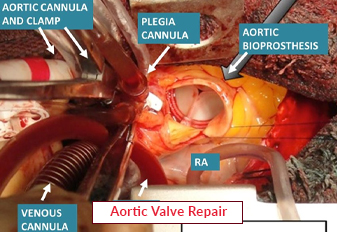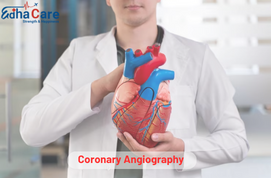Aortic Valve Repair

Aortic valve repair is a surgical procedure aimed at treating aortic valve disease by restoring the functionality of the patient's own valve. Unlike aortic valve replacement, which involves replacing the damaged valve with a prosthetic valve, aortic valve repair seeks to repair and preserve the patient's native valve.
Book an Appointment
About Aortic Valve Repair
Aortic valve repair is a surgical technique performed to correct structural abnormalities or dysfunctions of the aortic valve, which is responsible for regulating blood flow from the heart's left ventricle to the aorta. The procedure of Aortic Valve Repair aims to restore the valve's normal function, prevent further deterioration, and avoid the need for a valve replacement.
Survival Rate of Heart Valve Replacement Surgery
| Survival Rate of Heart Valve Replacement Surgery | ||
| Heart valve replacement surgery | 5-year survival rate | 10-year survival rate |
| Aortic valve replacement surgery | 94% | 84% |
| Tricuspid valve replacement surgery | 79% | 49% |
| Mitral valve replacement surgery | 64% | 37% |
| Pulmonary valve replacement surgery | 96% | 93% |
Aortic Valve Repair Techniques:
There are several techniques used in aortic valve repair, each tailored to the specific characteristics of the valve and the patient's condition:
-
Valvuloplasty: This procedure involves reshaping the valve leaflets and annulus to improve their function. It can include techniques such as commissurotomy (cutting the fused valve leaflets), decalcification (removing calcium deposits), and annuloplasty (reinforcing the valve ring).
-
Leaflet Repair: Surgeons can repair damaged or prolapsed aortic valve leaflets by removing excess tissue, suturing tears, or reinforcing weak areas with patches.
-
Reimplantation of the Valve: In some cases, the entire valve may be removed and then reattached within the aorta. This technique of Aortic Valve Repair can help correct annular dilatation and maintain the natural anatomy of the valve.
-
Valve-Sparing Root Replacement: This is a more complex procedure that involves replacing the aortic valve repair root while preserving the patient's own aortic valve. It is typically used for patients with aortic root aneurysms.
-
Minimally Invasive Approaches: Some aortic valve repairs can be performed through minimally invasive techniques, involving smaller incisions, shorter recovery times, and reduced scarring compared to traditional open-heart surgery.
Procedure of Aortic Valve Repair
Aortic valve repair is typically performed under general anesthesia in a hospital's cardiac surgery suite. The steps involved in the surgical procedure can vary depending on the chosen repair technique.
-
Anesthesia and Incision: Aortic valve repair is performed under general anaesthesia. The surgeon makes an incision in the chest, usually through a median sternotomy, to access the heart and aorta.
-
Examination and Assessment: The surgeon carefully examines the Aortic Valve Repair to determine the extent of the damage or dysfunction. Diagnostic tools such as transesophageal echocardiography may be used to assess the valve's structure and function.
-
Repair Techniques: Several techniques can be employed to repair the aortic valve, depending on the specific issue present:
a. Valve Reshaping: In cases of valve prolapse or regurgitation, the surgeon may reshape the aortic valve repair leaflets to ensure proper coaptation (closure) and prevent leakage.
b. Annuloplasty: If the valve annulus (the ring-like structure that supports the valve) is dilated or distorted, annuloplasty may be performed. This involves reinforcing and reshaping the annulus using sutures or an annuloplasty ring.
c. Leaflet Repair or Reconstruction: Damaged or torn valve leaflets can be repaired or reconstructed to restore their normal structure and function. This may involve removing excess tissue, reinforcing weak areas, or using tissue patches. -
Testing and Adjustment: After the aortic valve repair is completed, the surgeon tests the valve's function to ensure its effectiveness. This may involve injecting a dye or saline solution to assess the valve's closure and absence of leakage.
-
Closing Incisions: The incisions in the chest are closed, and the patient is weaned off the heart-lung machine.
-
Recovery: The patient is transferred to the recovery room and closely monitored as they wake up from anesthesia. They will eventually be moved to the intensive care unit (ICU) for further monitoring.
- Closure and Recovery: Once the Aortic Valve Repair is deemed successful, the surgeon closes the incisions using sutures or staples. The patient is then transferred to the intensive care unit (ICU) for postoperative care, monitoring, and recovery.
Require Assistance?
Get A Quick Callback From Our Healthcare Experts
Other Specilities We Cover

Robotic Heart Bypass Surgery

Heart Bypass Surgery




